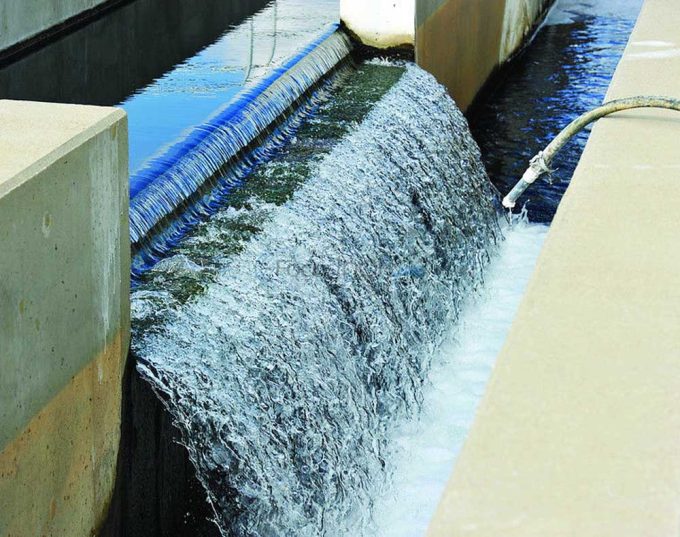Report on a Novel Water Disinfection Technology and its Alignment with Sustainable Development Goals
1.0 Executive Summary
A new water purification technology has been developed, utilizing a self-powered bottle that disinfects water through static electricity generated by human motion. This innovation presents a significant opportunity to advance several United Nations Sustainable Development Goals (SDGs), particularly those related to health, clean water, and sustainable energy. The low-cost, off-grid nature of the device makes it a viable solution for providing safe drinking water in underdeveloped regions, disaster zones, and other resource-limited environments.
2.0 Technological Overview
The system is integrated into a reusable 500-millilitre bottle and functions without external power sources. Its operation is based on the principles of triboelectricity, converting mechanical energy from walking into electrical energy for disinfection.
2.1 Key Components
- Internal Electrode: A polymer electrode featuring an array of Polypyrrole nanorods designed to concentrate electrostatic charges.
- External Conductor: A small piece of aluminium foil on the bottle’s exterior serves as a contact point to collect static electricity from the user’s hand.
- Transfer Mechanism: A copper wire connects the external foil to the internal electrode, channelling the electrical charge into the water.
2.2 Mechanism of Action
- Static electricity accumulates on the human body during the friction between footwear and the ground while walking.
- The user holds the bottle by the aluminium foil, transferring the static charge through the copper wire to the internal nanorod electrode.
- The nanorods create a strong electric field within the water, which is sufficient to kill or inactivate pathogens like bacteria and viruses.
3.0 Performance and Efficacy
Testing has demonstrated the device’s high effectiveness in water purification. In trials using contaminated river water, the system achieved complete disinfection within 10 minutes of walking. The efficiency of the disinfection process was observed to increase with a faster walking pace. However, performance is subject to certain environmental and material variables.
- Footwear Impact: The amount of static charge generated is influenced by shoe material. Polycarbonate, rubber, and PVC footwear yield significantly higher electrical output compared to materials like leather.
- Environmental Factors: High humidity can reduce the efficiency of static charge accumulation and transfer.
4.0 Contribution to Sustainable Development Goals (SDGs)
This technology directly supports the 2030 Agenda for Sustainable Development by addressing several key goals.
- SDG 6: Clean Water and Sanitation: The primary contribution is towards Target 6.1, aiming for universal and equitable access to safe and affordable drinking water. The bottle provides a decentralized, point-of-use purification method.
- SDG 3: Good Health and Well-being: By eliminating waterborne pathogens, the device helps prevent diseases such as cholera and dysentery, directly contributing to Target 3.3 (end epidemics of water-borne diseases) and Target 3.9 (reduce deaths from water pollution and contamination).
- SDG 7: Affordable and Clean Energy: The technology operates entirely on clean energy harvested from human motion, aligning with the goal of ensuring access to affordable and sustainable energy for all, especially in off-grid communities.
- SDG 1: No Poverty & SDG 11: Sustainable Cities and Communities: With an estimated cost of less than $2 per unit, the bottle is an affordable tool that enhances community resilience in low-income regions, disaster areas, and conflict zones, supporting the goal of making human settlements inclusive, safe, and resilient.
- SDG 9: Industry, Innovation, and Infrastructure: This device is a prime example of frugal innovation applied to critical infrastructure, promoting sustainable technological solutions for global challenges.
- SDG 12: Responsible Consumption and Production: As a reusable container, it offers a sustainable alternative to single-use purification tablets and bottled water, promoting responsible consumption patterns.
5.0 Future Development and Commercialization
The development team is currently focused on optimizing the manufacturing process for the nanorods to improve efficiency and scalability. The long-term objective is to develop commercially viable technology to ensure these sustainable and affordable water purification containers are widely available, particularly for the populations that stand to benefit most from their deployment.
Analysis of Sustainable Development Goals in the Article
-
Which SDGs are addressed or connected to the issues highlighted in the article?
The article highlights several issues that connect directly to the following Sustainable Development Goals (SDGs):
- SDG 6: Clean Water and Sanitation: This is the most prominent SDG, as the article’s central theme is a new technology for disinfecting drinking water. The text explicitly mentions its purpose is to provide clean water, especially for populations “lacking adequate sanitation infrastructure.”
- SDG 3: Good Health and Well-being: By developing a method to “kill or otherwise inactivate bacteria and viruses” in drinking water, the technology directly addresses the prevention of water-borne diseases, which is a critical component of public health.
- SDG 9: Industry, Innovation, and Infrastructure: The article describes an innovative technological solution—a self-powered water disinfection bottle using nanorods and static electricity. It also mentions plans to “develop a more efficient manufacturing process” and “commercially viable technology,” which aligns with the goal of fostering innovation and upgrading technological capabilities.
- SDG 1: No Poverty: The technology is designed to be affordable, with an “estimated cost of less than $2 per bottle.” This focus on low-cost solutions makes it accessible to the poor and vulnerable, particularly in “underdeveloped regions,” helping them access a basic service like clean water.
- SDG 7: Affordable and Clean Energy: The bottle’s power source is static electricity generated from walking, making it a self-sufficient, off-grid solution. It requires “no… external power sources,” which relates to providing access to sustainable and modern energy solutions, especially in areas with unstable or non-existent electricity grids.
-
What specific targets under those SDGs can be identified based on the article’s content?
Based on the article’s content, the following specific SDG targets can be identified:
- Target 6.1: “By 2030, achieve universal and equitable access to safe and affordable drinking water for all.” The article directly supports this target by introducing an affordable (less than $2) method to disinfect water, making it safe for drinking, especially for vulnerable populations in “isolated areas, disaster zones and conflict areas.”
- Target 3.9: “By 2030, substantially reduce the number of deaths and illnesses from hazardous chemicals and air, water and soil pollution and contamination.” The technology’s ability to “completely disinfect river water containing both bacteria and viruses” directly contributes to reducing illnesses and deaths caused by contaminated drinking water.
- Target 9.5: “Enhance scientific research, upgrade the technological capabilities of industrial sectors in all countries… encouraging innovation.” The development of this novel water purification system, using polymer electrodes and nanorods, is a clear example of scientific research and innovation. The plan to “develop commercially viable technology” further aligns with upgrading technological capabilities for production.
- Target 1.4: “By 2030, ensure that all men and women, in particular the poor and the vulnerable, have equal rights to economic resources, as well as access to basic services… [and] appropriate new technology.” The low cost and self-sufficiency of the bottle are designed to provide access to the basic service of clean water for the poor and vulnerable through an “appropriate new technology.”
-
Are there any indicators mentioned or implied in the article that can be used to measure progress towards the identified targets?
Yes, the article mentions or implies several indicators that can be used to measure progress:
- Indicator for Target 6.1: The primary indicator is the effectiveness of the water treatment. The article states the method can “completely disinfect river water containing both bacteria and viruses within 10 minutes.” This provides a measurable outcome for water safety. Another implied indicator is the proportion of the population using this safely managed drinking water solution.
- Indicator for Target 3.9: A direct indicator of progress is the “inactivation of bacteria and viruses” in contaminated water. While the article doesn’t measure health outcomes directly, the successful disinfection of water is a proxy indicator for the reduction of water-borne illnesses.
- Indicator for Target 1.4: The article provides a clear economic indicator: the “estimated cost of less than $2 per bottle.” This measures the affordability and accessibility of the technology for low-income populations.
- Indicator for Target 9.5: The development of a “commercially viable technology” and a “more efficient manufacturing process” are mentioned as future goals. Progress can be measured by the successful scaling of this technology from a prototype to a mass-produced, accessible product.
Summary of SDGs, Targets, and Indicators
| SDGs | Targets | Indicators |
|---|---|---|
| SDG 6: Clean Water and Sanitation | 6.1: Achieve universal and equitable access to safe and affordable drinking water for all. | Effectiveness of water disinfection (complete disinfection of bacteria and viruses in 10 minutes). |
| SDG 3: Good Health and Well-being | 3.9: Substantially reduce the number of deaths and illnesses from… water… pollution and contamination. | Demonstrated ability to kill or inactivate bacteria and viruses in water sources. |
| SDG 1: No Poverty | 1.4: Ensure that the poor and the vulnerable have access to basic services… [and] appropriate new technology. | Affordability of the technology (estimated cost of less than $2 per bottle). |
| SDG 9: Industry, Innovation, and Infrastructure | 9.5: Enhance scientific research, upgrade the technological capabilities… encouraging innovation. | Development of a novel purification system and plans for a commercially viable manufacturing process. |
| SDG 7: Affordable and Clean Energy | 7.1: Ensure universal access to affordable, reliable and modern energy services. | Use of a self-sufficient, off-grid power source (static electricity from walking) requiring no external power. |
Source: newscientist.com







